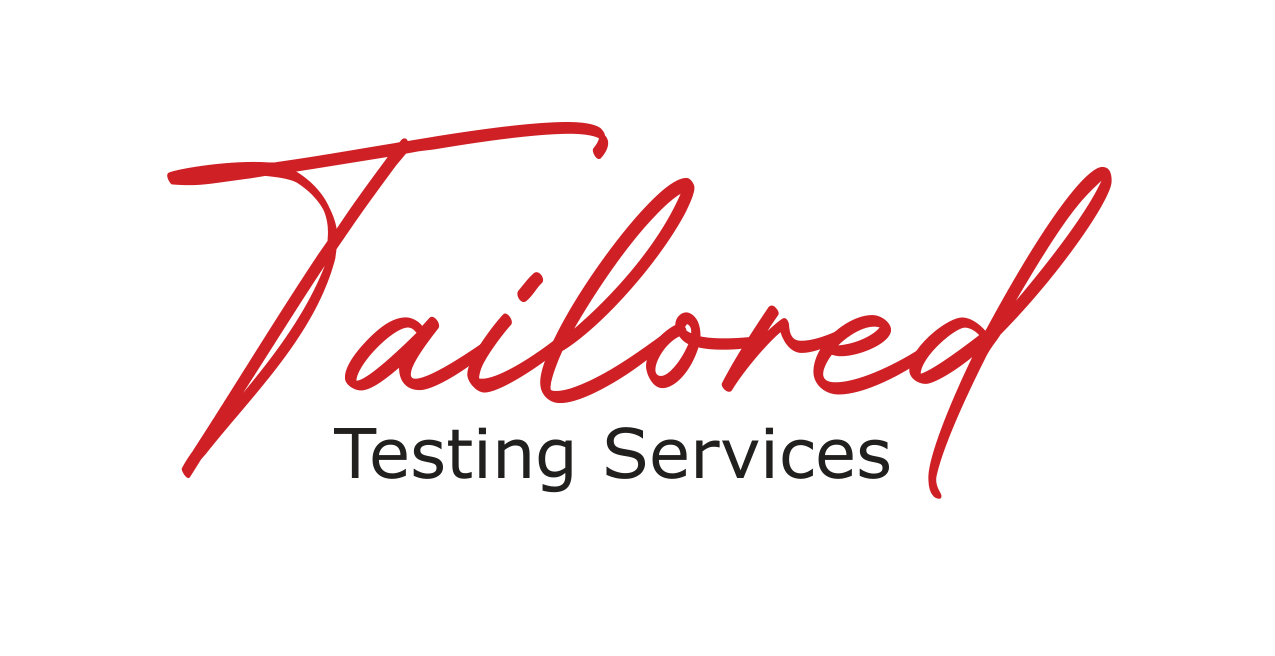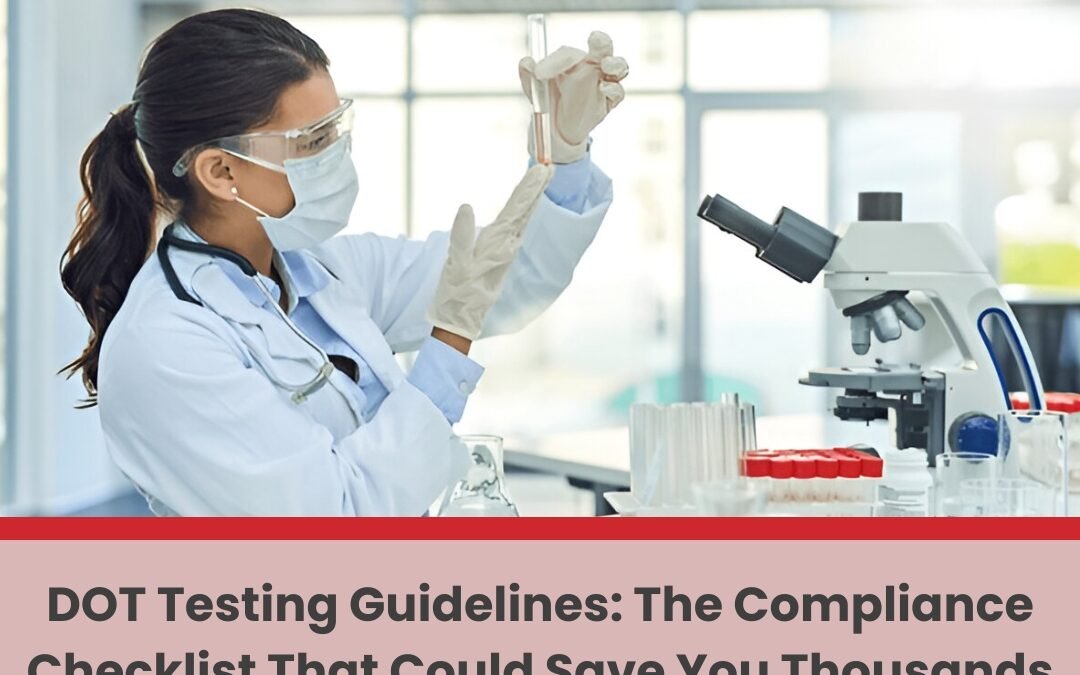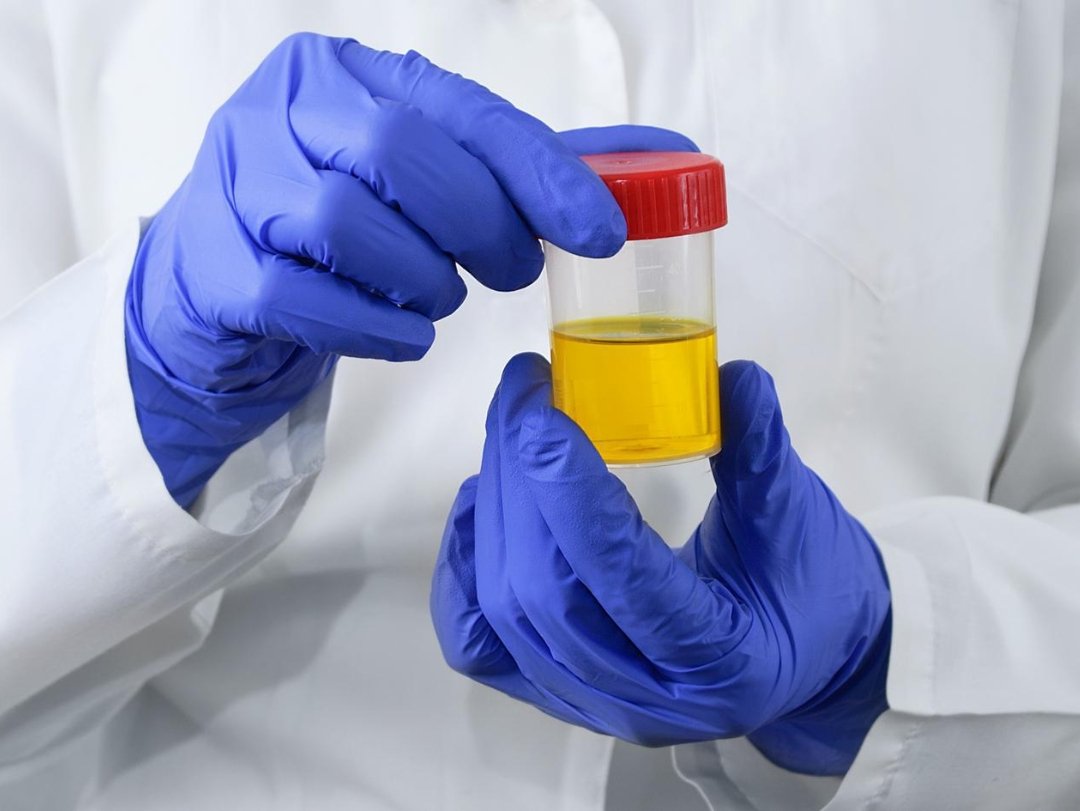DOT testing guidelines are not just a set of rules; they are essential regulations that can save your business thousands of dollars. These rules, established by the Department of Transportation (DOT), ensure that companies in safety-sensitive industries, such as trucking, public transportation, and railroads, maintain the highest safety standards. Failure to comply with these rules can lead to significant financial penalties, accidents, or even the shutdown of your business. By following the DOT testing guidelines, you can avoid costly mistakes and ensure that your company operates within the legal boundaries.
In this blog, we’ll provide you with a comprehensive overview of DOT testing guidelines and a step-by-step compliance checklist. We’ll also discuss common mistakes employers make and how to avoid them. So, let’s get started and make sure your business is DOT-compliant.
What Are DOT Testing Guidelines?
The Department of Transportation has established specific drug and alcohol testing rules for companies operating in safety-sensitive positions. These guidelines are mandatory for various industries, including trucking, aviation, public transit, and more. The goal of DOT testing is to prevent impaired workers from operating heavy machinery, vehicles, or public transport systems, ensuring public safety.
The Role Of The Department Of Transportation (DOT)
The DOT sets the rules that govern drug and alcohol testing in industries that have a direct impact on public safety. DOT testing guidelines are designed to reduce the risks associated with substance abuse in the workplace. The DOT provides clear instructions on how and when testing should be conducted, along with the types of substances to test for.
Who Must Follow DOT Testing Rules?
DOT testing guidelines apply to employers and employees in safety-sensitive positions. These include workers who operate commercial motor vehicles (CMVs), perform maintenance on transportation equipment, or handle public transportation duties. If your employees drive vehicles that weigh over 26,000 pounds or operate vehicles that transport hazardous materials, they are subject to DOT regulations.
Key agencies that enforce these rules include:
- FMCSA (Federal Motor Carrier Safety Administration)
- FAA (Federal Aviation Administration)
- FTA (Federal Transit Administration)
- FRA (Federal Railroad Administration)
- PHMSA (Pipeline and Hazardous Materials Safety Administration)
Employers need to understand which of their employees fall under DOT’s testing rules.
Types Of Required DOT Drug And Alcohol Tests
The DOT testing guidelines require different types of tests to be performed on employees, depending on the circumstances. These tests ensure that employees remain free from drugs and alcohol while performing safety-sensitive duties.
Here are the key types of tests:
- Pre-Employment Testing: This is required before an employee can be hired for a safety-sensitive position. It ensures that the new employee is drug and alcohol-free.
- Random Testing: Employees in safety-sensitive positions must be subject to random testing. The tests are unannounced and must occur at a minimum rate established by the DOT each year.
- Post-accident Testing: If an accident occurs and the employee’s actions may have contributed, post-accident drug and alcohol testing is required.
- Reasonable Suspicion Testing: If an employer suspects an employee of being under the influence of drugs or alcohol while at work, reasonable suspicion testing can be requested.
- Return-To-duty Testing: If an employee has tested positive for drugs or alcohol, they must undergo return-to-duty testing before returning to their job.
- Follow-Up Testing: Employees who have tested positive for drug or alcohol use may be subject to follow-up testing for a period of up to 60 months.
These types of testing are crucial in maintaining a safe and compliant workplace.
Why DOT Testing Guidelines Matter
Following DOT testing guidelines is critical for your business for several reasons. Non-compliance can result in costly financial penalties, damage to your reputation, and a higher risk of accidents.
Financial Risks Of Non-Compliance
Ignoring DOT testing guidelines can lead to hefty fines. If your company fails to conduct required tests or improperly documents the results, you may be subjected to severe penalties. These fines can range from hundreds to thousands of dollars per violation, depending on the severity. Furthermore, if your company is found to be non-compliant, the DOT may suspend your operations, costing you even more in lost revenue.
Safety And Liability Concerns
Public safety is the top priority when it comes to DOT testing. Drivers and workers who are under the influence of drugs or alcohol pose a significant risk to themselves, their coworkers, and the general public. A single accident caused by impaired driving can result in lawsuits, workers’ compensation claims, and insurance rate hikes. These costs can quickly add up and put your company at risk.
Legal and Operational Consequences
Failure to comply with DOT testing guidelines can also have legal consequences. If your company fails to conduct testing, you may face legal action, including disqualification of your drivers or operators. This can result in costly legal fees, operational delays, and a tarnished reputation.
Additionally, non-compliance can result in negative audit outcomes, further jeopardizing your business operations.
The Ultimate DOT Testing Compliance Checklist
To help you stay on top of your compliance responsibilities, we’ve created the ultimate DOT testing compliance checklist. By following these simple steps, you can ensure that your business adheres to DOT testing guidelines and avoids costly penalties.
1. Maintain A Written Drug And Alcohol Testing Policy
Every business subject to DOT testing regulations must have a written policy in place that explains the procedures for drug and alcohol testing. This policy should detail the types of tests that will be conducted, the consequences of failing a test, and the steps for addressing a positive test result. Your policy should also include information about the testing process, from who will be tested to how the tests will be administered.
2. Know Which Employees Are Covered By DOT Regulations
Ensure that you know which of your employees fall under DOT regulations. This includes safety-sensitive employees such as drivers, maintenance personnel, and anyone who handles hazardous materials or operates heavy machinery. You must also be aware of the different testing schedules and requirements for different types of employees.
3. Partner With A Certified Testing Provider
Working with a certified testing provider is crucial for ensuring that all tests are administered correctly and by DOT guidelines. Make sure the provider you choose is accredited and has experience in administering DOT-required tests. This will help you avoid errors in the testing process that could result in non-compliance.
4. Stay Updated On Random Testing Rates
The DOT requires that a certain percentage of your safety-sensitive employees be randomly tested each year. These random testing rates can change annually, so it’s important to stay updated on the latest requirements. Make sure your testing provider is conducting random tests at the required frequency to stay compliant.
5. Document Every Test And Result
Record-keeping is a critical component of DOT compliance. You must document every test result, including the date of the test, the employee’s information, and the results. These records should be stored securely and made available during audits. DOT requires you to keep these records for a minimum of five years.
6. Train Supervisors For Reasonable Suspicion Testing
Supervisors should be trained to identify signs of impairment and know when to initiate reasonable suspicion testing. This training ensures that your supervisors can make informed decisions if they suspect an employee is under the influence of drugs or alcohol. Proper training can help you avoid liability and ensure that the right procedures are followed.
7. Keep Records For The Required Timeframes
In addition to test results, you must also maintain other records related to DOT testing, including refusals to take tests, medical records, and any actions taken after a positive test. These records must be kept for a minimum of five years.
Common Mistakes Employers Make (And How To Avoid Them)
Even with a solid understanding of DOT testing guidelines, employers can still make mistakes. Here are some of the most common errors and how to avoid them:
1. Not Following Random Testing Schedules
Random testing is a critical part of DOT compliance, but many employers fail to conduct tests at the required intervals. To avoid this mistake, create a schedule for random testing and stick to it.
2. Using Unqualified Labs
Using unqualified laboratories can lead to inaccurate test results and non-compliance. Always choose a laboratory that is certified by the DOT to ensure that the testing process meets all required standards.
3. Poor Recordkeeping Practices
Inadequate recordkeeping can result in penalties during an audit. Keep accurate and up-to-date records for all tests and maintain them for the required length of time. Use an electronic record-keeping system to make the process easier and more efficient.
4. Failing To Train Supervisors Properly
Without proper training, supervisors may not know how to identify signs of impairment or initiate reasonable suspicion testing. Ensure that all supervisors receive regular training to stay compliant with DOT testing guidelines.
How Tailored Testing Service Helps You Stay Compliant
At Tailored Testing Service, we understand how complex DOT testing regulations can be. Our team of experts is here to guide you through every step of the compliance process. We offer drug testing programs, policy creation, supervisor training, and more to ensure that your business meets all DOT requirements.
Our services are designed to make your job easier and ensure that you avoid costly mistakes. With our expertise in DOT testing, you can rest assured that your company will stay compliant and safe.
Conclusion
Following DOT testing guidelines is crucial for ensuring the safety of your employees and the public. By staying compliant, you can avoid significant financial penalties, legal issues, and reputational damage. Use the compliance checklist we’ve provided to keep your business on track and avoid costly errors.
At Tailored Testing Services, we’re here to help you navigate the complexities of DOT testing. Contact us today for expert assistance in creating drug testing policies, conducting tests, and ensuring your company remains compliant with DOT regulations.
Stay compliant, save money, and protect your business! Reach out to Tailored Testing Services now for a consultation and let us help you meet all DOT testing guidelines.
Frequently Asked Questions
1. What is the current DOT drug testing panel?
The current DOT drug testing panel includes testing for marijuana, cocaine, amphetamines, opioids, and phencyclidine (PCP).
2. How often do random tests need to happen?
The frequency of random testing depends on the industry and the number of employees in safety-sensitive positions. The DOT sets the minimum random testing rates each year.
3. What happens if an employee refuses a test?
Refusal to take a DOT test is treated as a violation of DOT regulations. The employee may face disciplinary action, including termination, and may not be allowed to return to work until they complete a return-to-duty process.
4. How long must DOT test records be retained?
DOT test records must be retained for at least five years. This includes test results, refusals, and other related documentation.




